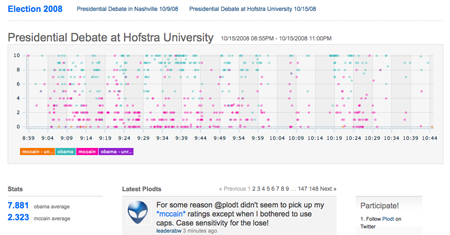Not long after a mention on international television, Joe the Plumber had a Twitter account. By debate’s end, he already had over 200 followers. Google searches unearthed a plethora of web sites for the generic new archetype for normal America, but the real man behind the reference was completely lost in the Twitosphere, with less than two dozen of the 27,000 debate-related tweets referring to his name (Wurzelbacher).
Joe Wurzelbacher: American plumber and internet meme
Watching a debate has never before been a social event of this magnitude. In addition to more traditional political gatherings to watch coverage, we now have microblogging—Twitter, in particular—to help give thousands of individuals a collective and immediate voice in the process. CNN pundits have to wait until the candidates finish talking before they can start telling the world what to think. For active Web 2.0 participants, the lag is measured in minutes, if not seconds. From John McCain’s lips to Twitter’s servers.
There were several ways in which debate tweeting was facilitated:
- Plodt, a new third-party application that uses codes in Twitter posts to track and graph user information, worked with NPR to create a real-time graph of responses to what was being said in the debate, as it was happening. What was most interesting about this was that Obama won 7.881 to 2.323 for McCain, which almost adds up to the 10 maximum scale of the graph without any requirement for that to happen. It is also interesting to see how participation dropped off in the second hour.
- The Twitter Election site, launched to coincide with the first presidential debate, filters the public timeline for tweets with keyword and hashtag references relevant to the national election. It is a push technology that allows the viewer to watch the tweets roll by without needing to refresh.
- Hack the Debate is a mashup of Twitter posts and live video of the debate from Current TV, broadcast online and through satellite and cable television. Using the hashtag #current, tweets were superimposed on the top of the two candidates, as they debated. A similar mashup with video microblogging platform, 12 seconds, is currently handling the post-debate response.
A fellow SOI grad student spent time Wednesday night capturing much of the data flowing through these channels for the two hours of live debate. We hope to produce some academic analysis of this phenom on several fronts, including how the lag time between broadcast speech and collective response propagates over the event.

Plodt and NPR teamed to create a live response to the debate